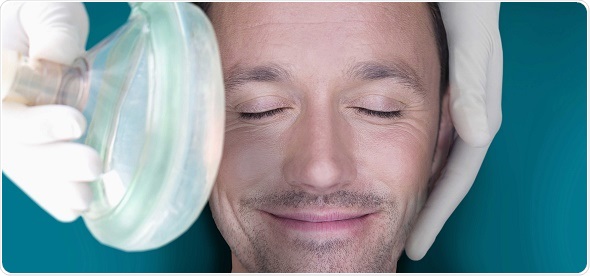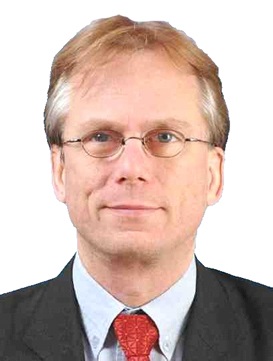Why is innovation in anaesthesia so important?
The spectrum of patients seen today, from pre-term infants to the morbidly obese to the longer living elderly, is wider than ever before and increasingly more challenging with patients often presenting with multiple co-morbidities. This puts a huge strain on healthcare providers who are facing increasing challenges such as cost pressure and staff shortages.
Innovation may help improve the clinical outcomes for these varied patients, supporting the caregiver and the patient with the best possible and individualised tailored therapy and helping counter the financial pressures of healthcare providers.

What new innovations are GE Healthcare currently working on to personalise the care of patients in anaesthesia?
GE has developed an exceptional set of technologies for surgery spanning physiological patient monitoring, automated drug and oxygen delivery, monitoring the state of the brain, and relaxation monitoring. These elements are combined into a unified Carestation to improve patient care and the quality of drug delivery and enhance workflow, possibly reducing the learning curve.
One recent example of GE's innovation is individualized automated oxygen and anaesthetic agent delivery*. Clinical studies1 show automated delivery is more efficient than manual control in maintaining a target oxygen level and can reduce the consumption of anaesthetic agents2 between 40-50%, which helps the hospital lower its costs and helps protect the environment.
Another example is a tool we've developed to help the caregiver give the appropriate level of oxygen and anaesthetic agent to the patient and protect against wasteful over delivery of fresh gas flow and anaesthetic agents.3
*GE's automated oxygen and anaesthetic agent delivery option is not available in all markets. Not cleared or approved by the U.S. FDA. Not for sale in the United States.
How can the risk of side effects be reduced as much as possible?
General anaesthesia has side effects as it disrupts the normal physiological equilibrium of the patient. These side effects can be relatively mild, such as postoperative nausea to more complex respiratory related issues.
By tailoring the therapy of the patient, through monitoring parameters and automated drug and oxygen delivery we help ensure the patient receives from the clinician the appropriate level of hypnosis / unconsciousness and neuromuscular blocking agents to avoid the side effects associated with under dosage and over dosage.
Why is it important to monitor oxygen levels of the patient? How can this be achieved?
Relatively recent studies4 show that too much oxygen has detrimental effects on patients undergoing general anaesthesia. These include lung collapse, lung complications after surgery leading to longer recovery times, longer lengths of stay and higher costs for the healthcare provider.
There are also risks associated with too low levels of oxygen. The care giver needs to be constantly vigilant to ensure the correct level of oxygen is achieved and maintained and avoid hypoxic concentrations.
GE's oxygen measurement is achieved with special miniaturised solid state technology, on a continual breath by breath basis. A sample of the respiratory gases the patient is breathing is passed through a magnetic field and sensor array to measure the inspired and expired oxygen concentration. Other respiratory gases, nitrous oxide, carbon dioxide and volatile anaesthetic agents are measured at the same time, also on a breath by breath basis.
Airway gas monitoring is one of our core competences, having pioneered carbon dioxide and anaesthetic agent monitoring in the 1970s and 1980s.
How do you know when a patient is suffering and when it is necessary to adjust the analgesic?
Painful stimulation causes sympathetic responses of the autonomic nervous system. During a surgical operation, such responses are normally suppressed by analgesic medication.
If administration of analgesia is inadequate relative to the level of the stimulation, the patient may show responses such as increased heart rate and peripheral constricted blood vessels.
By what methods can you monitor how much of the drug the patient is eliminating during anaesthesia?
You can see whether the patient has the appropriate level of sedation for surgical procedures under inhaled general anaesthesia by monitoring airway gas.
By measuring inspired and expired concentrations of the inhaled anaesthetic agents, you can tell how much uptake and elimination there is.
Do you need to take the BMI of a patient into consideration?
For general anaesthesia, predicted body weight or predicted lean body mass are more commonly used than BMI per se.
We take patient demographics into account (gender, height) to automatically tailor ventilation settings for the patient.
What do you think the future holds for innovation in anaesthesia?
Two main areas will be driven by innovation. The first is automation: healthcare is one of the least automated sectors overall. GE have made automation mainstream by target control of volatile agents and patient oxygen on new anaesthesia systems.
Automation through further 'closing the loop' on parameter feedback such as sedation levels and response to surgical stimulus, is the next innovation to come, with emphasis on enhanced workflow for the caregiver, helping clinicians improve patient safety and patient outcomes.
The second area is analytics: often referred to as 'the internet of things' or 'the industrial internet' where a vast amount of data is available from patient monitors, anaesthesia systems, respiratory devices, currently under-used.
In the future this data will be used to provide further innovation such as real time decision support for more informed decisions to improve patient outcomes. GE is investing heavily in driving this transformation across all areas of healthcare.
What are GE Healthcare's plans for the future with regards to anaesthesia?
We want to address current workplace challenges of disparate devices, cable clutter and below standard workflow.
GE will continue to put the patient at the heart of technology and supporting caregivers through intelligent tools and automation to release more time to care for the patient and less time focused on the equipment.
Where can readers find more information?
References
- Lucangelo et Al. End-tidal versus manually-controlled low-flow anaesthesia J Clin Monit Comput DOI 10.1007/s10877-013-9516-8.
- Singaravelu S, Barclay P. Automated control of end-tidal inhalation anaesthetic concentration using the GE Aisys Carestation. Brit J Anaesth. Apr 2013;110(4):561-566
- Tay S, Weinberg L, Peyton P, Story D, Briedis J. Financial and environmental costs of manual versus automated control of end-tidal gas concentrations. Anaesth Intens Care. Jan 2013;41(1):95-101.
- Mechanisms of atelectasis in the perioperative period - Best Pract Res Clin Anaesthesiol. 2010 Jun;24(2):157-69.
About Matti Lehtonen
General Manager - Anesthesia & Respiratory Care, GE Healthcare
 Matti joined GE Healthcare in October 2007 as General Manager (GM) of Life Support Solutions' (LSS) iPerformance, the value segment of anesthesia. After heading up a recent acquisition in China, Matti led the iPerformance team. Since July 2011 he has run the global Anesthesia business, and in April 2013 expanded his responsibilities to include the intensive care ventilator business forming Anesthesia and Respiratory Care, part of Life Care Solutions.
Matti joined GE Healthcare in October 2007 as General Manager (GM) of Life Support Solutions' (LSS) iPerformance, the value segment of anesthesia. After heading up a recent acquisition in China, Matti led the iPerformance team. Since July 2011 he has run the global Anesthesia business, and in April 2013 expanded his responsibilities to include the intensive care ventilator business forming Anesthesia and Respiratory Care, part of Life Care Solutions.
Matti entered anesthesia in 1994 after working in the photovoltaic field. He joined Instrumentarium as a Technical Area Manager and later became the Area Manager for Asia, based in Hong Kong. In 1998, he moved to Polar, the Finnish heart rate monitoring company, as GM for manufacturing and Asia-Pacific sales. In 2001 he joined Elcoteq, a Finland-based Electronic Manufacturing Services (EMS) company, as GM of their Beijing plant. He progressed to Operations Director, Asia Pacific, and eventually Global Quality Director. Matti briefly ventured into consulting as Managing Director, China of IWNC (I Will Not Complain), an Asia-based people development firm.
Finnish-born Matti holds an MSc degree in Computer Science and Manufacturing Management from Helsinki University of Technology, and also majored in Modern Chinese Grammar from Peking University.